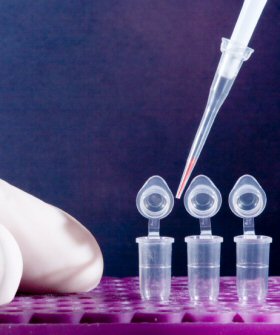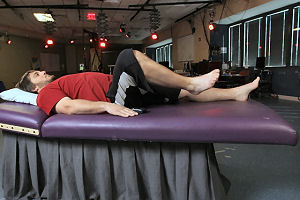
Coming hot on the heels of the news that scientists have turned stem cells into sperm, theProceedings of the National Academy of Sciences reports that researchers have extracted adult stem cells from fatty tissue (adipose) and turned them into smooth muscle cells.
Smooth muscle cells are found throughout the body and make up the walls of hollow organs like the bladder, intestines and arteries, so this breakthrough could lead to fat being used to engineer and repair these vital organs. “Fat tissue may prove a reliable source of smooth muscle cells that we can use to regenerate and repair damaged organs,” said Dr. Larissa V. Rodriguez, principal investigator from the Department of Urology at the David Geffen School of Medicine at UCLA. And while smooth muscle cells have been created from stem cells found in the brain and bone marrow, they’re easier to extract from fat cells, which most people have in abundance.
For help with this next phase Rodriguez approached UCLA associate professor of bioengineering Dr. Benjamin Wu. Wu’s team manufactured a device that could monitor the movement of microbeads dispersed in a collagen gel planted among the smooth muscle cells, gauging the cells’ contraction capability. The team then applied a variety of pharmacological agents already known to activate either the contraction or relaxation of smooth muscle. “We found that the cells did indeed function just like smooth muscle,” said Wu. “The new device allowed us to evaluate drug-induced changes in the physical properties of smooth muscle at the cell level – previously we’ve needed tissue samples to observe this phenomenon.”
To confirm the results, Rodriguez repeated all stages of the experiment using a cloned population of cells cultivated from a primitive adipose stem cell. After repeating the experiment a second time, the team was rewarded with a similar set of results. “We wanted to make sure it wasn’t an isolated case or particular conditions in the cell cultures that allowed us to create or select out already existing smooth muscle cells,” said Rodriguez. “We are surprised and pleased with the results and are excited about future applications.”
Rodriguez pointed out a number of situations where using the patients own adipose stem cells would be highly advantageous, such as in patients who cannot use their own organs for tissue regeneration due to diseased or missing organs. In addition, there would be no need to use anti-rejection drugs. Rodriguez is currently trying to identify and develop growth factors that will speed up the transformation of adipose stem cells.


















Comments are closed.